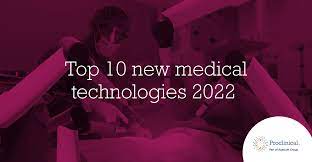
Advancements in Ultrasound Technology: Revolutionizing Healthcare with Cutting-Edge Ultrasound Tech
The Evolving Role of Ultrasound Technology in Modern Medicine
Introduction to Ultrasound Technology
Ultrasound technology, often associated with the joyous images of expectant parents seeing their unborn child for the first time, has far-reaching applications beyond obstetrics. This non-invasive diagnostic tool uses high-frequency sound waves to produce images of the inside of the body, aiding physicians in diagnosing and treating a variety of conditions.
How Ultrasound Works
An ultrasound machine transmits sound waves into the body through a handheld device called a transducer. These waves bounce off tissues, organs, and fluids within the body and are reflected back to the transducer. The data is then translated into images by a computer attached to the ultrasound machine. Unlike X-rays, ultrasounds do not use ionizing radiation, making them safer for patients—especially pregnant women and their fetuses.
Applications in Healthcare
The versatility of ultrasound technology makes it an essential tool across various medical disciplines:
- Cardiology: Echocardiograms utilize ultrasound to assess heart function and structure.
- Gastroenterology: Ultrasounds can evaluate abdominal organs like the liver, pancreas, and gallbladder.
- Musculoskeletal: Soft tissue injuries and joint conditions can be visualized without exposing patients to radiation.
- Vascular: Doppler ultrasounds measure blood flow through arteries and veins, identifying blockages or clots.
Exploring Ultrasound Technology: Functionality, Applications, Safety, Benefits, and Limitations
- How does ultrasound technology work?
- What are the common applications of ultrasound in healthcare?
- Is ultrasound safe for pregnant women and their fetuses?
- What are the advantages of using ultrasound over other imaging techniques?
- Are there any limitations or drawbacks to using ultrasound technology?
How does ultrasound technology work?
Ultrasound technology operates by emitting high-frequency sound waves from a transducer into the body. These waves travel through tissues and bounce back to the transducer after encountering different densities within the body. The returning sound waves are then converted into images by a computer, providing detailed visuals of internal structures such as organs, blood vessels, and developing fetuses. Unlike X-rays, ultrasound does not involve ionizing radiation, making it a safe and non-invasive diagnostic tool widely used in various medical specialties for imaging and monitoring purposes.
What are the common applications of ultrasound in healthcare?
Ultrasound technology plays a crucial role in healthcare with a wide range of common applications. From assessing heart function and structure in cardiology to evaluating abdominal organs like the liver, pancreas, and gallbladder in gastroenterology, ultrasound is a versatile diagnostic tool. It is also used in musculoskeletal imaging to visualize soft tissue injuries and joint conditions without exposing patients to radiation. Additionally, ultrasound aids in vascular studies by measuring blood flow through arteries and veins, helping identify blockages or clots. These varied applications demonstrate the invaluable role of ultrasound technology in modern healthcare practices.
Is ultrasound safe for pregnant women and their fetuses?
Ultrasound technology is considered safe for pregnant women and their fetuses. Unlike X-rays, ultrasounds do not use ionizing radiation, making them a preferred imaging method during pregnancy. The sound waves emitted by the ultrasound machine pose minimal risk to both the mother and the developing baby. Obstetricians often use ultrasounds to monitor fetal growth, check for abnormalities, and determine the baby’s position in the womb. It is important for pregnant women to follow their healthcare provider’s recommendations regarding ultrasound scans to ensure the well-being of both mother and child throughout the pregnancy.
What are the advantages of using ultrasound over other imaging techniques?
When comparing ultrasound to other imaging techniques, such as X-rays or CT scans, several advantages become apparent. One key benefit of ultrasound is its non-invasive nature, as it does not involve ionizing radiation, making it safer for patients, including pregnant women and their fetuses. Additionally, ultrasound provides real-time imaging, allowing healthcare providers to observe internal structures and organs in motion. This dynamic capability aids in the diagnosis of conditions that may not be easily captured by static images alone. Furthermore, ultrasound is portable and cost-effective, making it more accessible in various healthcare settings. Its versatility across different medical specialties further underscores the advantages of using ultrasound as a valuable diagnostic tool.
Are there any limitations or drawbacks to using ultrasound technology?
When considering the use of ultrasound technology, it is important to acknowledge that, like any medical tool, there are limitations and drawbacks associated with its application. One notable limitation is the inability of ultrasound waves to penetrate bone or air-filled structures effectively, which can hinder imaging in certain areas of the body. Additionally, factors such as patient body habitus, operator skill level, and the presence of scar tissue or gas can impact the quality and accuracy of ultrasound images. Despite these constraints, advancements in technology continue to address many of these challenges, enhancing the overall utility and effectiveness of ultrasound in modern healthcare practices.



